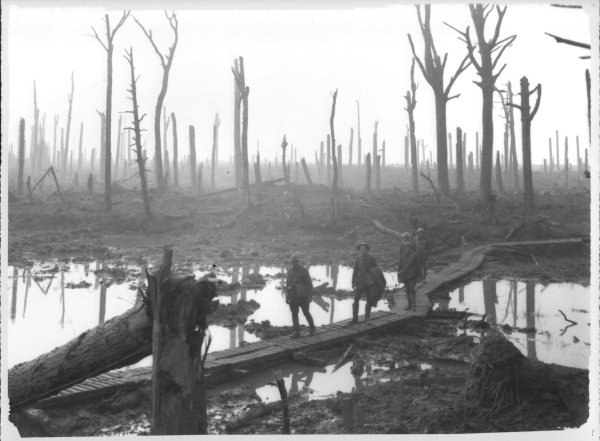Remembrance Day
|
||||||||||
At 11am on 11 November 2008, the 90th anniversary of the Armistice of 1918, people from the countries of Europe and the old British Empire will pause to remember the service and sacrifice of the men and women of World War I. For the more than 400,000 Australians who volunteered for service in the years 1914-1918, this war was a proving ground, an adventure and overwhelmingly a tragedy. More than 60,000 Australians were to lose their lives before war’s end, and families and communities from all corners of Australia would grieve the loss of loved ones who would never return. Many of those who did return would remain casualties for the rest of their lives.
 |
Photographs have supplied a vital part of the memory of World War I and through their variety illustrate the harsh landscapes, the terrible experiences and even the wry humour of the Australian soldier.
Frank Hurley’s famous image of five Australians crossing a duckboard path at Chateau Wood (pictured) is one of the defining images of the twentieth century, and it has become a central component of the national memory of the war. It remains the subject of public fascination, and families continue to make claims on the identity of the men depicted. The photograph has, in some ways, come to embody the experience of the war. In this image, in which a small band of diggers are surrounded by an alien, completely devastated landscape, the war is depicted as a realm of incomprehensible destruction, but also one in which tight bonds were formed.
To mark this significant anniversary, the Department of Veterans’ Affairs has published a calendar focusing on the photography of World War I. This calendar is on display in Pennant Hills Library in the Civic Trust Cabinet. [courtesy Department of Veterans’ Affairs]
Trevor Patrick is a local historian of the north-west of Sydney, Australia. His latest book, In Search of the Pennant Hills, recounts some of these stories (and others) in more detail.